#anne bourchier
Text
The Queen’s Mother: Lady Maud Parr
Maria de Salines (Bea Segura), Lady Maud Parr (Natalie Grady), and Katherine of Aragon (Paola Bontempi) in Secrets of the Six Wives (2016)
By Meg Mcgath, 22 March 2023 *be kind and if you find info here…leave breadcrumbs. Thanks!*
Lady Maud Parr, (6 April 1492 – 1 December 1531) was the wife of Sir Thomas Parr of Kendal, Knt. She was the daughter and substantial coheiress of Sir Thomas Green of…
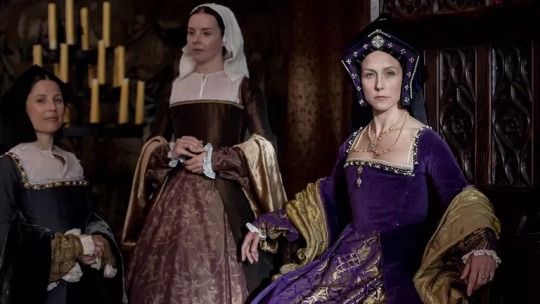
View On WordPress
#1st Earl of Pembroke#3rd Lord Latimer#anne bourchier#Anne Parr#catherine parr#Countess of Pembroke#Elizabeth FitzHugh#family of Catherine Parr#family of Katherine Parr#Fogge of Kent#george throckmorton#House of York#Jane Fogge#John Neville#katherine of aragon#katherine parr#lady latimer#Lady Maud Parr#lady vaux#Marchioness of Northampton#mary seymour#Maud Green#maud parr#Parr family#Parr of Kendal#Queen Katherine Parr#Queen&039;s sister#sir thomas green#sir thomas parr#Thomas Seymour
0 notes
Text
Bryan strained every nerve on his cousin's behalf, 'first,' as he said, 'by fair means and afterwards by foul.' Anne wanted nothing left to chance. A fortnight after Christmas, as Bryan was arriving in Rome, she persuaded Henry to send Stephen Gardiner to reinforce him. He too departed at once and, like Bryan, he was to correspond with Anne independently of Henry.
Hunting the Falcon, John Guy & Julia Fox
#anne boleyn#i really wish we knew specifically why they had a falling out...i wonder if he became very offended at what#the treatment of mary had been in elizabeth's household bcus that is the familial connection here#(his mother was margaret bourchier nee bryan and also anne's maternal aunt)#francis bryan#i could also see anne becoming angry with him for having possibly later faciliated henry's affairs (not anything we know definitively but#given his reputation#...maybe)#john guy#julia fox#primary sources#stephen gardiner#henry viii
6 notes
·
View notes
Text
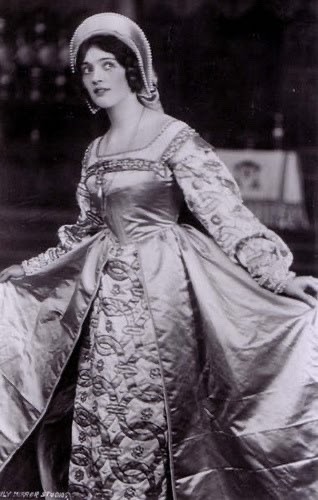
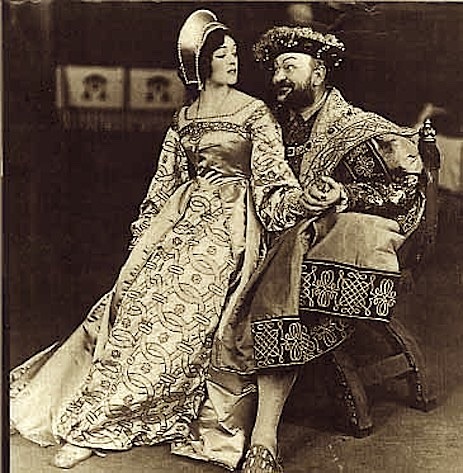
Laura Cowie in the short film Henry VIII (an adaptation of Shakespeare’s play), 1911. (feat. Arthur Bourchier as Henry VIII)
0 notes
Text
Isabel of Cambridge's second son, William, married Anne Woodville, sister to Elizabeth Woodville. Just another way the Woodville's became Yorks!
#elizabeth woodville#isabel of cambridge#war of the roses#woodville#anne woodville#william bourchier
1 note
·
View note
Photo





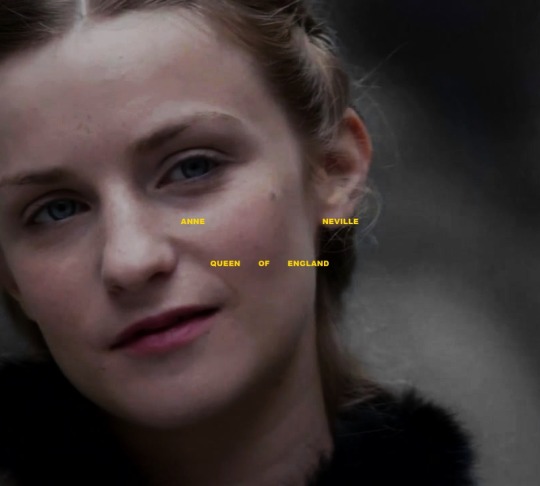

On 25 June 1483, Richard ascended the throne as King Richard III. Anne Neville was crowned alongside her husband on 6 July 1483 by Thomas Bourchier, Archbishop of Canterbury, the first joint coronation in England in 175 years.
#the white queen#twqedit#perioddramaedit#richanne#richard iii#anne neville#richard x anne#perioddramacentral#onlyperioddramas#aneurin barnard#faye marsay#history#historyedit
531 notes
·
View notes
Text

Anne Parr was born around 1514 to Sir Thomas Parr and his wife, Maud Green. She was the youngest child of Thomas and Maud.
Sir Thomas died of the sweating sickness in 1517, leaving Maud, only twenty-two years old, to fend for her three very young children. Maud decided to not remarry, so that she might retain her wealth left to her from her husband, and decided to devote her attention to her children. Maud Parr was a lady in waiting to Catalina of Aragon.
As the Parr children came of age, their mother made designs for them to marry well. William was the first, when he married Anne Bourchier in 1526. Anne was placed in Catalina of Aragon's household two years later as a lady-in-waiting. Anne's sister, Catherine, was married off to Baron Borough in 1529. That same year, their mother, Maud, died, and Anne became a ward of King Henry VIII.
After Henry's divorce from Catalina of Aragon and subsequent marriage to Anne Boleyn, the teenage Anne Parr remained in the King's household as a lady-in-waiting to the new Queen. Anne Parr remained as a lady-in-waiting to each of Henry VIII's wives, and is one of the few people to have been lady-in-waiting to all six.
By 1537, as 'Mrs Parr', Anne had become one of Jane Seymour's maidens. She was barely sixteen, sweet and, thanks to her mother's foresight, eminently marriageable. As we have seen, her father had left her a substantial marriage portion, to which her mother's will added 400 marks in plate and a third share of her jewels. The whole fortune, Lady Parr had directed, was to be securely chested up 'in coffers locked with divers locks, whereof every one of them my executors and my ... daughter Anne to have every of them a key'. 'And there', Lady Parr's will continued, 'it to remain till it ought to be delivered unto her' on her marriage.As Lady Herbert, she was keeper of the Queen’s jewels to Catherine Howard, although she left court briefly to give birth to her first child, Henry, ABT 1540. She was back at court in time to attend the disgraced Queen at Syon House and in the Tower. When her sister Catherine became Henry VIII’s sixth Queen in 1543, Anne returned to court. John Dudley, who was now Lord Admiral and Viscount Lisle, wrote to William Parr from Greenwich on 20 Jun: 'but that my Lady Latimer, your sister, and Mrs Herbert be both here at Court with my Lady Mary's Grace and my Lady Elizabeth'.Anne, along with Catherine Willoughby and Anne Stanhope were part of the Queen Catherine's inner circle, and they were all Protestants. After Anne Askew, a Protestant was arrested, those who opposed Queen Catherine tried to gain a confession from Askew that the Queen, her sister, and the other women were Protestants. Askew refused to name any names, even under the pain of torture; still, warrants for the arrest of the Parr sisters and the other two were sent out. Gardiner and his new ally Wriothesley got Henry's agreement to a coup against the Queen. Her leading women, Ladies Herbert, Lane and Tyrwhitt, would be arrested; their illegal books seized as evidence; and the Queen herself sent 'by barge' to the Tower. The Queen, however, warned of what awaited him, apologized to Henry. Quickly reconciled, and when Wriothesley arrived with forty yeomen of the guard at his back and an arrest warrant from the Queen in her pocket, was greeted with a barrage of real abuse and sent packing with his tail between his legs.Anne and her husband used Baynard’s Castle as their London residence. For the birth of her second son Edward, Anne's sister loaned her the manor of Hanworth in Middlesex for her lying in. After the birth, Anne visited Lady Hertford, who had also just given birth, at Syon House near Richmond. In Aug, the Queen sent a barge to bring Anne by river from Syon to Westminster. A girl was the hird child of William and Anne, named Anne. After Henry VIII's death, when the Queen dowager's household was at Chelsea, both Anne and her son Edward were part of the household there. At the time of her death, Anne Parr was one of Princess Mary’s ladies.
In 1551, William Herbert was created Earl of Pembroke. Anne died quite unexpectedly at Baynard's Castle and was buried in St. Paul's Cathedral next to the tomb of John of Gaunt. Her memorial there reads: "a most faithful wife, a woman of the greatest piety and discretion".
Source: http://www.tudorplace.com.ar/Bios/AnneParr.htm
#perioddramaedit#the tudors#history#edit#history edit#henry viii#anne boleyn#tudorsedit#anne parr#anne herbert#anne herbert nee parr#catherine parr#katherine parr#vittoria puccini#tudor dynasty#maud parr#tudor era#tudorsdaily#historical aesthetic#women in history#catherine willoughby#anne askew#anne stanhope#catherine of aragon#historical figures#16th century#elizabeth i
78 notes
·
View notes
Photo

Dorothy Bray, Baroness Chandos (c. 1524 – 31 October 1605) was an English noblewoman, who served as a Maid of Honour to three queens consort of King Henry VIII of England; Anne of Cleves, Catherine Howard, and Catherine Parr. From 1541 to 1543, she had an affair with the latter's brother, William Parr, 1st Marquess of Northampton, whose own wife, Anne Bourchier, 7th Baroness Bourchier had eloped with a lover.
In 1546, Dorothy married her first husband Edmund Brydges, 2nd Baron Chandos.
51 notes
·
View notes
Text
Catherine of Aragon’s Ladies-In-Waiting/Maids-Of-Honor
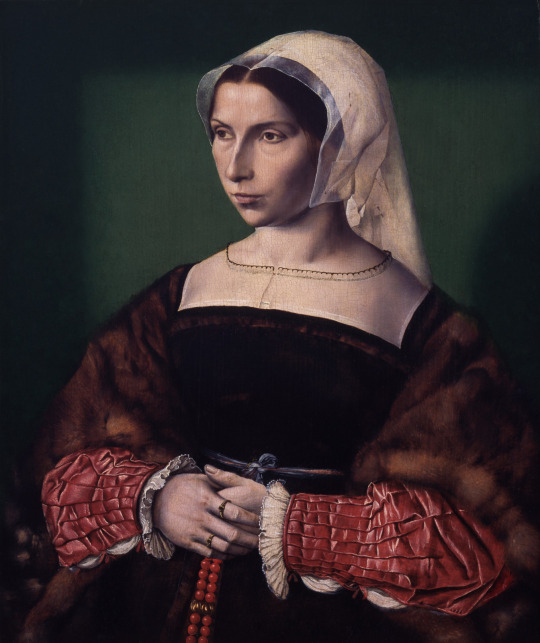

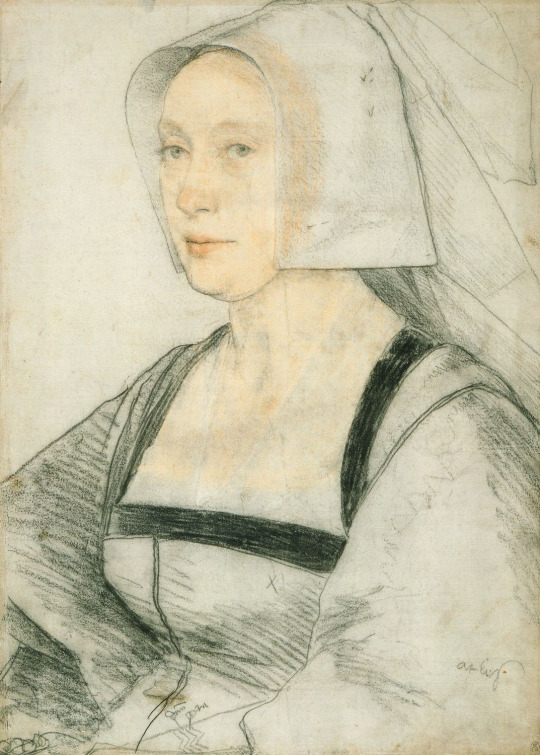


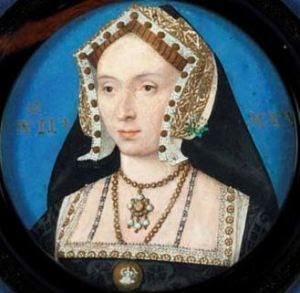

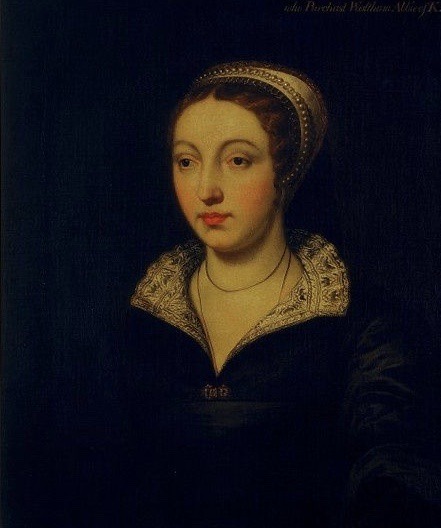
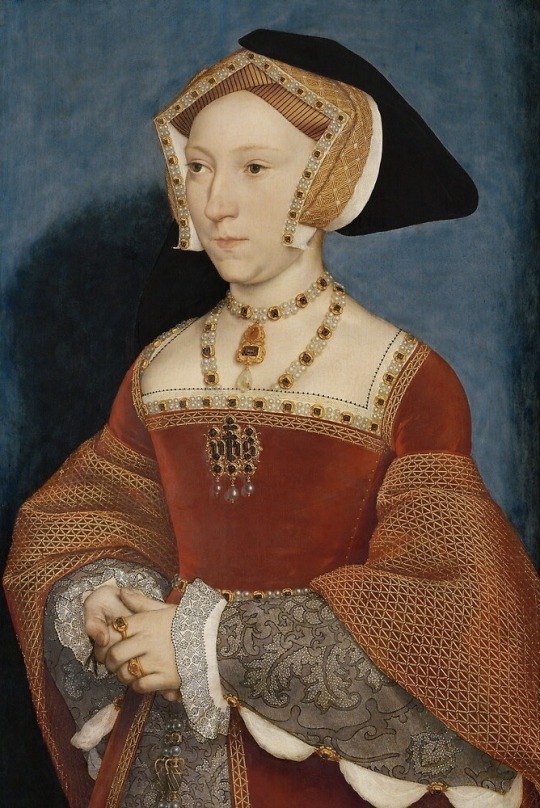
Ladies-in-waiting:
Anne Hastings - Daughter of William Hastings and Katherine Neville. Married at 10 years old to 13 year old George Talbot, becoming Countess of Shrewsberry. The two had 11 children.
Mary Say - Daughter of Sir William Say and Elizabeth Fray. Married to Henry Bourchier.
Elizabeth Scrope - daughter of Sir Richard Scrope and Eleanor Washbourne. Married to William Beaumont.
Margaret Scrope - No info.
Elizabeth Stafford - Daughter of Edward Stafford and Eleanor Percy. Her father was executed for treason against Henry VIII. Married to Thomas Howard, making her the Duchess of Norfolk. The two had five children. In 1530, she was caught conveying letters to Catherine of Aragon, and was exiled from court the next year.
Agnes Tylney - Daughter of Hugh Tylney and Eleanor Tailboys. Married to Thomas Howard, making her the Duchess of Norfolk. The two had seven children. She was put in the tower when her step-granddaughter, Katherine Howard, was convicted for treason, but was eventually released.
Maud Green - Daughter of Sir Thomas Green and Jane Fogge. Married to Sir Thomas Parr when she was 16 years old. The two had three children, including Katherine Parr.
Elizabeth Howard - Daughter of Thomas Howard and Elizabeth Tinley. Married to Thomas Boleyn. The two had three children, including Anne Boleyn.
Margaret Pole - Daughter of George Plantagenet and Isabel Neville. Her brother, Edward, was executed in 1499 for treason against Henry VII. Married to Sir Richard Pole, the two had five children. She was executed in 1541 for treason against Henry VIII.
Joan Vaux - Daughter of Sir William Vaux and Katherine Penyston. Married to Sir Richard Guilford, the two had one child. In 1499, she was made Lady Governess to Princess Margaret and Mary. She stood for Henry VIII as a witness that Catherine of Aragon and Arthur, Prince of Wales, had consummated their marriage.
Maids-of-honor:
Dorothy Badby - No info.
Elizabeth (Bessie) Blount - Daughter of Sir John Blount and Catherine Pershall. She was mistress to Henry VIII for about eight years, and bore him an illegitimate son, Henry Fitzroy. Married Gilbert Tailboys, then again to Edward Clinton. She gave birth to 7 children in her lifetime.
Gertrude Blount - Daughter of William Blount. Married to Henry Courtenay, the two had two children. She was chosen as godmother at the confirmation of Princess Elizabeth, even though she was a close friend of Catherine of Aragon. In 1538, she was put in the Tower along with her husband and son. Her husband was executed, but her and her son were released.
Anne Boleyn - Daughter of Thomas Boleyn and Elizabeth Howard. Married Henry VIII when his marriage to Catherine of Aragon was annulled. The two had one child, the future Elizabeth I. She was executed on false charges in 1536.
Joan Champernowne - Daughter of Sir Phillip Champernowne and Katherine Carew. Married to Sir Anthony Denny, the two had twelve children.
Elizabeth Darrell - Daughter of Sir Edward Darrell and Alice Flye. She was the mistress of Sir Thomas Wyatt, who she bore three children by. Married to Robert Stroud in her later years.
Bridget Fogge - Daughter of Sir John Fogge and Alice Fogge. Married to Antoneye Lowe, the two had four children.
Margery Horsman - Close friend of Anne Boleyn’s, and was one of those interrogated before Anne’s arrest.
Frideswide Knight - No info.
Mary Norris - Daughter of Thomas Fiennes and Anne Bourchier. Married to Sir Henry Norris, the two had four children. Five years after her death, her husband was executed for being one of the five alleged lovers of Anne Boleyn.
Katherine Payne - No info.
Jane Popyngcort - Taught Princess Margaret and Mary French. Was rumored to be a mistress of Henry VIII.
Maria de Salinas - Daughter of Martín de Salinas and Josefa González. Married to William Willoughby, the two had one child. She was a good friend of Catherine of Aragon’s, but wasn’t allowed to see her after the annulment from Henry VIII.
Jane Seymour - Daughter of Sir John Seymour and Margery Wentworth. Married Henry VIII after the execution of Anne Boleyn, and she bore him one child, a son. She died not long after she gave birth.
Anne Stanhope - Daughter of Sir Edward Stanhope and Elizabeth Bourchier. Married to Sir Edward Seymour, making her the Duchess of Somerset. The two had seven children. She was said to be very snobby, but was highly intelligent.
Lucy Talbot - No info.
Anne Weston - No info.
Mary Zouche - No info.
179 notes
·
View notes
Text
This 17th-Century Cookbook Contained a Vicious Attack on Oliver Cromwell's Wife
https://sciencespies.com/history/this-17th-century-cookbook-contained-a-vicious-attack-on-oliver-cromwells-wife/
This 17th-Century Cookbook Contained a Vicious Attack on Oliver Cromwell's Wife
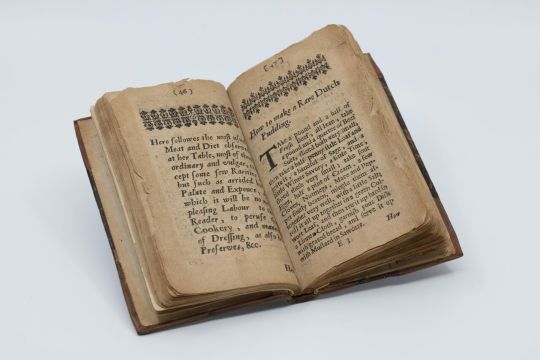
The death of Oliver Cromwell, the embattled Lord Protector of 1650s England, didn’t stop his enemies from doing everything they could to tarnish his reputation. And these efforts included one very odd line of attack: namely, publishing a cookbook that claimed to offer recipes collected by the Parliamentarian’s wife, Elizabeth.
Titled The Court & Kitchen of Elizabeth, commonly called Joan Cromwell, The Wife of the Late Usurper, the text clearly isn’t a cheery celebrity cookbook. Aside from the obvious attack represented by the word “usurper,” the name “Joan” is a reference to sex workers, not a nickname actually used by Elizabeth, writes scholar Stuart Orme for the Moment magazine.
The cookbook, newly republished by the Cromwell Museum in Huntingdon, contains 102 recipes, including barley broth, venison pasty and a rare Dutch pudding. Some ingredients listed, like eels from Cromwell’s native region of Fenland, may have been intended to paint the family as unsophisticated.
“There was a lot of snobbery going on,” Orme, the museum’s curator, tells ITV Anglia’s Matthew Hudson. “A lot of the recipes were very ordinary by the standards of the time, … [the] sort of dishes that would have been eaten by middle class people across England in the 17th century. Part of the argument that the Royalists were making was the Cromwells weren’t suited to rule because, quite frankly, they were a bit common.”
In the book, Elizabeth’s recipes are described as “the most usual Meat and Diet observed at her Table, most of them ordinary and vulgar, except some few Rarities.” An introductory essay filled with insults aimed at the Cromwells adopts a similar tone.
“It would be a bit like today, if you were to go out and buy a cookery book [supposedly] written by Michelle Obama and the first third of it was an essay by Donald Trump saying how awful Barack Obama was,” Orme tells Atlas Obscura’s Anne Ewbank.
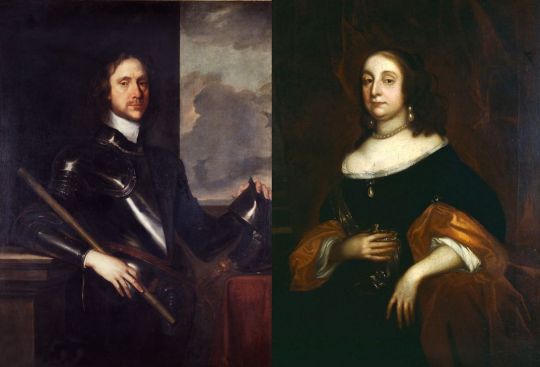
Oliver and Elizabeth Cromwell
(Public domain via Wikimedia Commons)
Oliver Cromwell was the first person who was not a member of the royal family to serve as Great Britain’s head of state. He helped lead the Parliamentarian side in the English Civil Wars of 1642–1651, contributing to the downfall of Stuart king Charles I and the temporary abolition of the monarchy itself.
Cromwell was a radical Puritan known for the brutal reconquest of Ireland in 1649. But after taking power as Lord Protector in 1954, he advocated against severe punishments for minor crimes, readmitted Jews to England and worked to improve education at all levels. Most modern scholars, wrote John Morrill for History Extra in 2014, view him as “a man of towering personal integrity [who] … believed in broad terms in social justice, equality before the law and the accountability of governors to the people.”
In the years directly following his 1658 death, however, Cromwell had a decidedly different reputation. Charles II reclaimed the crown in 1660, restoring the monarchy and ending the nation’s brief tenure as a republican commonwealth. He then ordered Cromwell’s body exhumed and, after a posthumous trial for high treason, “executed.”
Elizabeth, who was still alive at the time, bore some of the brunt of continuing anti-Cromwell propaganda designed to support the monarchy. She was targeted partly because of her class background: Though her husband had come from a somewhat prominent family—he was indirectly descended from Thomas Cromwell, chief minister to Henry VIII, and his grandfather was a knight who sometimes entertained royal hunting parties—Elizabeth (born Elizabeth Bourchier) was “a genuine commoner,” albeit one from a prosperous merchant family, according to BBC News. She died in 1665, seven years after Oliver.
As former Cromwell Museum curator John Goldsmith told BBC News in 2014, “The whole point of the curious [cookbook] is that she’s this ordinary Fen housewife and how ridiculous [it is] that she’s elevated to this position.”
Still, Orme tells Atlas Obscura, the recipes themselves aren’t bad. He recommends the carbonnade of beef, which, he says, is “really nice, actually.”
The newly published edition of the cookbook includes a glossary and introduction by Orme. The full text of the original book is also available online through the University of Michigan Library’s Early English Books Online program.
#History
1 note
·
View note
Photo
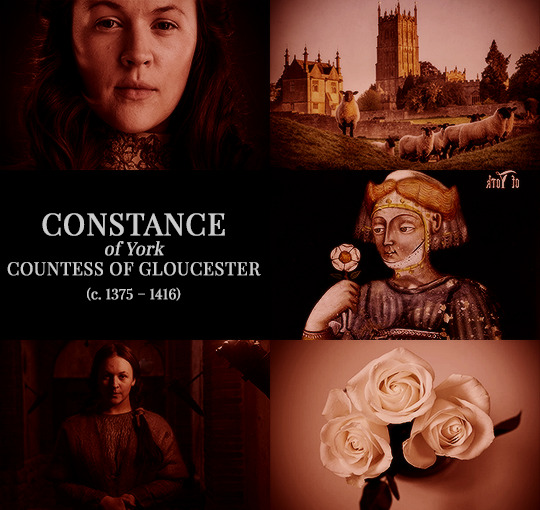
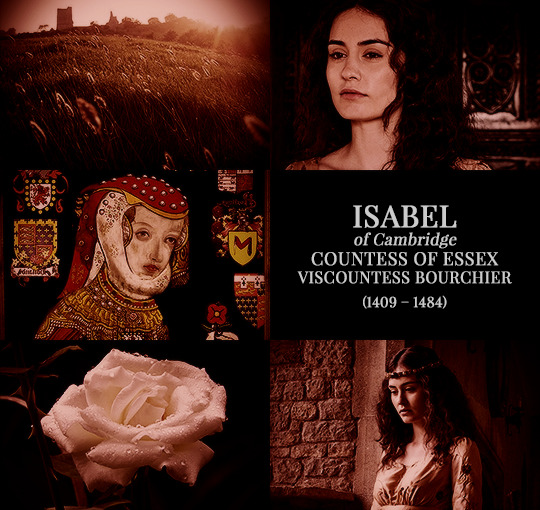
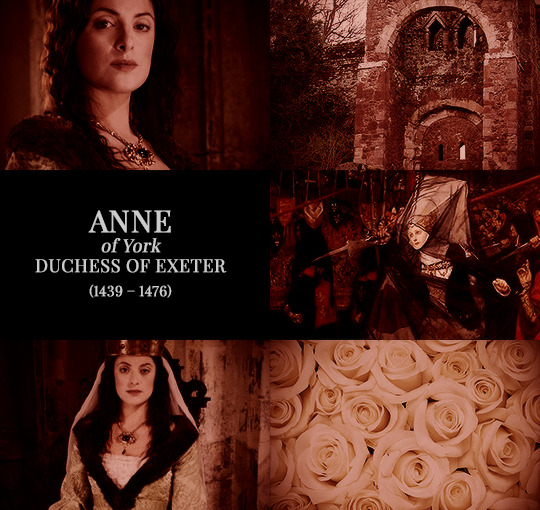
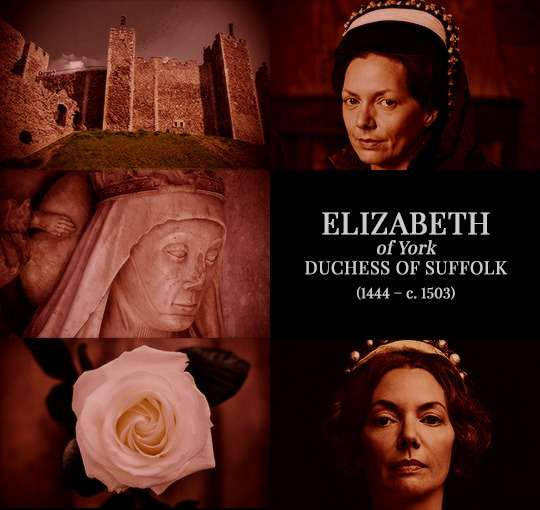
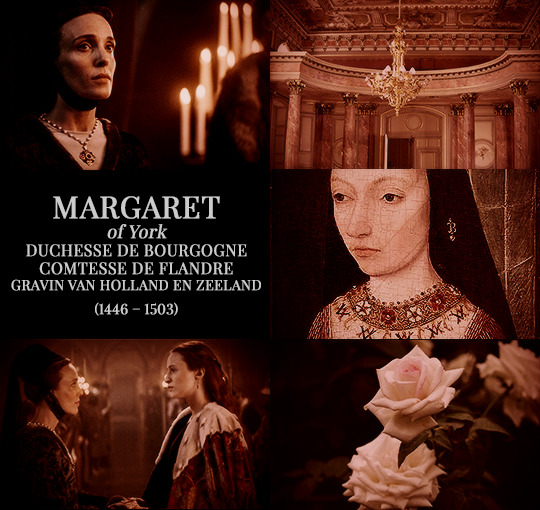


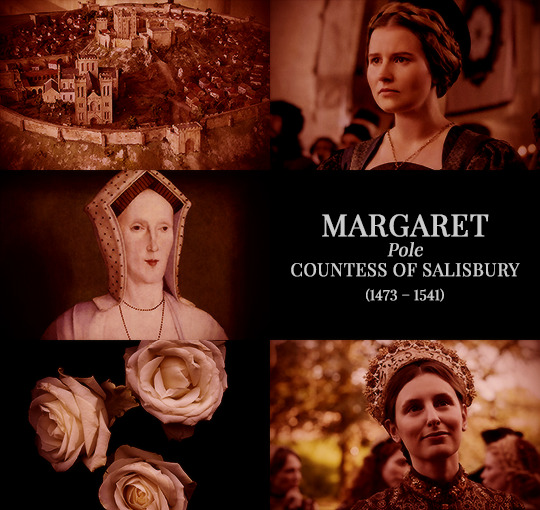

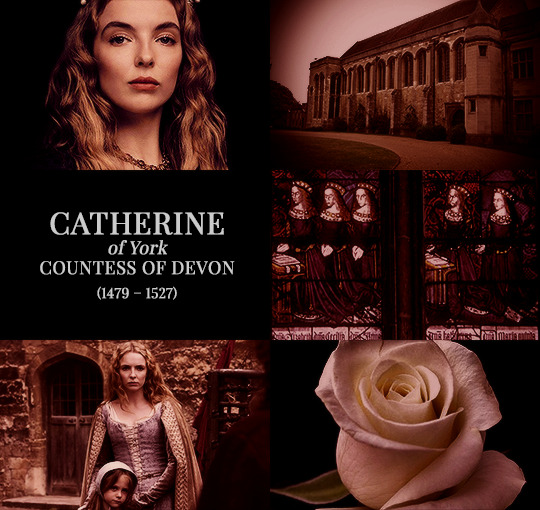
Women of the House of York aesthetic
Constance of York, Countess of Gloucester. Daughter of Edmund of Langley, 1st Duke of York and Isabel de Castilla. Mother of Isabel le Despenser, Countess of Warwick and Eleanor Holland, Baroness Audley. Grandmother of Elizabeth de Beauchamp, Baroness Bergavenny; Anne de Beauchamp, 16th Countess of Warwick; and Margaret Touchet, Countess of Tankerville.
Isabel of Cambridge, Countess of Essex. Daughter of Richard of Conisburgh, 3rd Earl of Cambridge and Anne de Mortimer. Grandmother of Cecily Bourchier, Baroness Ferrers of Chartley.
Anne of York, Duchess of Exeter. Daughter of Richard, 3rd Duke of York and Cecily Neville. Mother of Anne Holland and Anne St Leger, Baroness de Ros.
Elizabeth of York, Duchess of Suffolk. Daughter of Richard, 3rd Duke of York and Cecily Neville. Mother of Elizabeth de la Pole, Baroness Morley and Catherine de la Pole, Baroness Stourton.
Margaret of York, duchesse de Bourgogne. Daughter of Richard, 3rd Duke of York and Cecily Neville.
Elizabeth of York, Queen of England. Daughter of Edward IV and Elizabeth Wydeville. Mother of Margaret Tudor, Queen of Scots and Mary Tudor, reine de France. Grandmother of Mary I of England; Margaret Douglas, Countess of Lennox; Elizabeth I of England; Frances Grey, Duchess of Suffolk; and Eleanor Clifford, Countess of Cumberland.
Cecily of York, Viscountess Welles. Daughter of Edward IV and Elizabeth Wydeville.
Margaret Pole, Countess of Salisbury. Daughter of George Plantagenet, 1st Duke of Clarence and Isabel Neville. Mother of Ursula Pole, Baroness Stafford.
Anne of York. Daughter of Edward IV and Elizabeth Wydeville.
Catherine of York, Countess of Devon. Daughter of Edward IV and Elizabeth Wydeville. Mother of Margaret Courtenay, Baroness Herbert.
#house of york#house of plantagenet#medieval#historyedit#english history#european history#women's history#history#royalty aesthetic#nanshe's graphics
149 notes
·
View notes
Text
Mary Tudor during the reign of Anne Boleyn - Part One 1533 - 1534
I wanted to do an accurate and detailed timeline as possible of everything that happened to Mary during the years Anne Boleyn was queen. Most know the basics, that she was mentally abused, harassed and depressed, but I wanted to show just how strong she was.
She endured the loss of her royal title and the death of her mother, but refused to passively accept the situation she was in. Despite being away from court she remained at the forefront of many people’s minds, and was considered a true threat to King Henry for her actions, some which verged on treason.
Some events are undated, so for some that have a general date I’ve put whereabouts it occurred. Others I have no idea, and have put them in a order that most makes sense. I’ve used many quotes from sources, and included some letters.
This got so long I had to split it into two parts, but here’s part one, 1533 - 1534, under the cut. I hope you find it interesting!
1533
22nd April – Henry writes to Princess Mary, telling her of his new marriage. She is at first sad, before pretending to be happy at the news. She writes a letter to the King, and when pressed for a verbal answer she “would not say a single word, referring instead to her letter.” Upon reading it, the King is well satisfied and praises her prudence.
She is forbidden to write to her mother. She begs to send a messenger who might testify that she sends no message except asking how the queen is, or show the King the letters first. He refuses.
? - Is unwell, and asks for permission for the Queen’s physician and apothecary to attend to her which the King grants. The Queen is allowed to send her messages.
27th May – Mary goes from Otford, where she has been staying nearly a year, to Beaulieu. While here in late June, she finds out her aunt Mary has died.
17th July – John Hussey is commanded to deliver Mary’s jewels to Frances Aylmer.
21st July – John Hussey tells Thomas Cromwell he spoke to Margaret Pole, who will make an inventory of the jewels. She will not deliver them unless obtain direct orders from King.
22nd August – Cromwell writes to Hussey desiring Mary’s plate.
28th August – Hussey writes to Cromwell. He has examined the clerk of Mary’s jewel house, and spoken to Margaret Pole. She says the plate is occupied at all seasons and cannot be spared.
7th September - Birth of Elizabeth.
? - Mary writes “a comforting letter to the Queen her mother, which is wonderfully good.”
? - Katherine replies back to Mary? [undated; c.late 1533 - beginning of 1534?]:
Daughter, I heard such tidings today that I do perceive, if it be true, the time is come that Almighty God will prove you; and I am very glad of it, for I trust He doth handle you with a good love. I beseech you agree to His pleasure with a merry heart; and be you sure that, without fail, he will not suffer you to perish if you beware to offend Him." I pray you, good daughter, to offer yourself to Him. If any pangs come to you, shrive yourself; first make you clean; take heed of His commandments, and keep them as near as He will give you grace to do, for then are you sure armed. And if this lady do come to you, as it is spoken, if she do bring you a letter from the King, I am sure in the self-same letter you shall be commanded what you shall do. Answer you with few words, obeying the King your father in everything, save only that you will not offend God and lose your own soul; and go no further with learning and disputation in the matter. And wheresoever and in whatsoever company you shall come, [obey] the King's commandments. Speak you few words, and meddle nothing. I will send you two books in Latin : one shall be De Vita Christi, with the declaration of the Gospels ; and the other the Epistles of Jerome, that he did write always to St. Paula and Eustochium; and in them I trust you shall see good things. And sometimes, for your recreation, use your virginals, or lute, if you have any. But one thing specially I desire you, for the love that you do owe unto God and unto me, to keep your heart with a chaste mind, and your body from all ill and wanton company, [not] thinking nor desiring any husband, for Christ's Passion; neither determine yourself to any manner of living until this troublesome time be past; for I dare make you sure that you shall see a very good end, and better than you can desire. I would God, good daughter, that you did know with how good a heart I do write this letter unto you. I never did one with a better, for I perceive very well that God loveth you. I beseech Him of His goodness to continue it; and if it fortune that you shall have nobody to be with you of your acquaintance, I think it best you keep your keys yourself, for howsoever it is, so shall be done as shall please them. And now you shall begin, and by likelihood I shall follow. I set not a rush by it ; for when they have done the uttermost they can, then I am sure of the amendment. I pray you recommend me unto my good lady of Salisbury, and pray her to have a good heart, for we never come to the kingdom of Heaven but by troubles. Daughter, wheresoever you become, take no pain to send for me, for if I may I will send to you.
By your loving mother, Katharine The Queen
20th September – Hussey tells Mary she is no longer a princess and is instead a bastard. She is astonished, and won’t accept unless he has direct writing from King. Her servants likewise agree a commandment given by John Hussey is not sufficient.
2nd October – Mary receives a letter stating the same from William Paulet, controller of the royal household. Disbelieving, she writes to the King:
“This morning my chamberlain came and informed me that he had received a letier from Sir Will. Paulet, controller of your House, to the effect that I should remove at once to Hertford castle. I desired to see the letter; in which was written "the lady Mary, the King's daughter," leaving out the name of Princess. Marvelled at this, thinking your Grace was not privy to it, not doubting but you take me for your lawful daughter, barn in true matrimony. If I agreed to the contrary I should offend God ; in all other things you shall find me an obedient daughter. From your manor of Beaulieu, 2 Oct.”
c. 9th October – The Earl of Essex [Henry Bourchier], the Earl of Oxford [John de Vere], Earl of Sussex [Robert Radcliffe] and Doctor Sampson go to Mary to tell her she is not to use the title of Princess. Mary makes them meet in front of her servants in case they put words in her mouth. She refuses to accept she is no longer a princess, bringing them nearly to tears. Mary writes to her father saying she would be obedient, but he cannot take away the titles God gave her. Her household is curtailed, with some such as her cofferer William Cholmeley, her cofferer entering Elizabeth’s household.
c.13th October – Mary moves from Beaulieu to Hertford castle.
c. late October/early November? – Mary hears she will be lady’s maid to Elizabeth. Asks the Spanish ambassador and lawyer, Eustace Chapuys for advice. Chapuys sends Mary a protest stating she would not do anything which was prejudicial to her.
13th December – Duke of Norfolk [Thomas Howard, Anne Boleyn’s uncle] goes to Mary, telling her father’s pleasure is for her to enter service of Elizabeth who he calls Princess of Wales. Mary says that “is a title which belongs to I by right, and no other.” She says her father’s proposals are strange and unfitting. Norfolk said he is not there to debate. Mary is allowed half an hour in her private chamber, which she uses to draw out a protest Chapuys gave her, saying if she is compelled to or persuaded by deceit to renounce her rights, enter a nunnery or marry against her will, no prejudice should occur. Margaret Pole, Countess of Salisbury offers to go with her, paying for her own expenses, but is refused. Mary asks for a years wages given to her servants and leaves for Hatfield with 2 attendants/maids of honour.
On the way, Doctor Foxe, her father’s almoner, tells her to stand firm for the love of God, otherwise the whole kingdom is in ruin and perdition.
Arriving at Hatfield, Norfolk asks her if she will pay her respect to the Princess. Mary says she “knows no Princess in England except herself.” Mary tells him to tell the king his daughter, the Princess of Wales, begs for his blessing. He refuses, so she tells him to go away and leave her alone. She retires to her chamber, the worst in the house, to cry.
c.26th December – Mary has now been deprived of her 2 maids of honour who accompanied her. She has only one common chamber maid, who doesn’t taste her food, however she supports her and sends letters to and from Chapuys and others. She has all her food in her chamber, and no good guard about her.
Anne Shelton, Anne Boleyn’s aunt, is in charge of the household. Lady Margaret Bryan, her old governess, mother of Elizabeth Carew is there, as well as William Cholmeley.
Mary refuses to pay court to Elizabeth unless compelled by sheer force. She can no longer be served meat before 11am like before. In her own house Mary “was much desirous to have meat immediately after she was ready in the morning, or else she should be in danger eftsoons to return to her said infirmity.” Unable to have this, now Mary wants her breakfast larger instead, so she can eat a little piece of meat at supper.
1534
c.5th? January – Henry visits Hatfield, sends orders ahead that Mary should not come to him. Cromwell, the treasurer [William Fitzwilliam] and captain of the guard [William Kingston] are sent to persuade Mary to renounce her title. She replies it is labour wasted to press her and has given a decided answer. She asks to see Henry and kiss his hand, but is refused. When Henry is leaving, she goes to a terrace at the top of the house, and bends on her knees with hands joined. Henry sees, bows to her and put his hand to his hat. The men with him do the same before leaving.
? January - Mary has been warned to be on her guard. She had been having breakfast in her chamber then going to table in public not eating or drinking; this is no longer allowed.
28th January - Chapuys sends to Mary “certain books of consolation, in which she takes great pleasure.”
He tells her there has been a a report in France about her marriage to the Marquis of Saluzzo, and that she must not consent to any marriage without her mother’s and Charles V’s consent.
29th January - The Duke of Norfolk and Brian Tuke visit Mary, presumably to persuade her to submit to the king.
? - Mary replies back to Chapuys, stating she will not marry without consent.
c.18?th February – Mary has no clothes and money, so sends a gentleman to the King. She also asks for her to attend mass at the church which adjoins the house but this is not allowed. Country people seeing her in the gallery salute her as princess and now she is kept closer. Nothing is done without the leave of Anne Shelton.
c.5th March – Anne Boleyn visits her daughter. She urgently solicits Mary to honour her as queen, saying it would be a means of reconciliation with the king, and she herself would intercede with him for her. Mary replies she “knew no Queen in England except her Mother, but if the said madam would do her that favour with her father she would be much obliged’.
16th March – Duke of Norfolk takes all her best clothes and jewels saying she is no longer princess and “her pride must be abated.” She continues to not pay court to Elizabeth unless forced – when walking together, she is always in front of or behind her when taken anywhere, instead of at her side. William Cholmeley is dismissed because he showed affection to her and did her some service.
23rd March - The First Act of Succession passed, declaring Mary a bastard and Elizabeth the heir.
25th March – A warrant is signed for new clothes for Mary.
26th March – Mary is forcibly put into a litter with Anne Shelton when she refuses to accompany Elizabeth to Eltham. She makes a public protest at the compulsion used.
c.? April – French ambassadors visit Elizabeth. Chapuys sends Mary a letter letting her know what has happened in Rome (Pope Clement has declared Henry and Catherine’s marriage valid), and that it is important she remain constant. Mary sends that she will do, and is better pleased with the said news then if they had sent her a million of gold.
18th April – Henry and Anne visit Eltham for 2 days with Richard Featherstone and more. Mary is commanded not to leave her chamber. One of Mary’s maids who refused to swear to the act of succession is locked up in her chamber and compelled to swear on threat of being taken to prison. Anne Shelton tells her if she were in the king’s place she would kick Mary out of the house for disobedience, and that the king said he would make her lose her head for violating the laws of his realm. Mary asks to see Richard Featherstone, her old tutor to confirm this. They speak in Latin so people don’t understand; Featherstone says “that is not good Latin”.
c.1st? May – The royal comptroller [William Paulet], and the Earl of Wiltshire [Thomas Boleyn] visit Mary to try and make her renounce title. She refuses.
c.10th? May – Mary’s maid who had been compelled to swear the act is dismissed, and has no where to go or a means to support herself. Mary is “much grieved for she was the only one in whom she had confidence, and by her means letters” from Chapuys and others. Her confessor is dismissed and replaced by another ‘Lutheran’. After her maid is dismissed, Henry sends a message begging if she would lay aside her obstinacy he would promise her before Michaelmas that she would have a royal title. She doesn’t believe him and refuses, as “God has not blinded her to confess her father and mother had lived in adultery and made her a bastard”.
7th June – Mary signs the letter of protestation Chapuys wrote and sent her before moving to Hatfield against her treatment. She declares she will not marry, enter a monastery or take any step without the consent of her mother. She diverts the guards around her to send it to Chapuys. Mary expects she will die. She believes “she could not better gain Paradise than by such a death.”
12th July – Chapuys warns Mary that William Paulet and Thomas Boleyn will visit her again tomorrow.
13th July – Paulet and Boleyn visit Mary for a second time. She is threatened to be shut up in her chamber.
27th July – King visits Eltham to see Elizabeth. He sends a gentlemen to make Mary withdraw to her chamber so she would not see him.
29th August – Hearing that the King intends the household to move to Hunsdon and for her to accompany Elizabeth, Mary sends to Chapuys 3 times in less then 24 hours to know what to do. He says he will go to Greenwich in disguise and see her pass, and to speak boldly but not go to extreme of being taken by force.
The comptroller promises she will not go after Elizabeth, however the litter is already there and Mary is compelled to go after. Instead, the comptroller allows her, as soon as she is mounted to go before or after the litter as she pleased. As soon as she on horseback she pushes forward, galloping ahead and arriving at Greenwich an hour before Elizabeth.
She enters the waiting royal barge and sits in the most honourable place. When they set sail, a disguised Chapuys watches on from the riverside.
? - Mary is diseased in her head and stomach, causing Anne Shelton to send for a Mr Michael who gave her pills. These cause her to be sick. One of Chapuys’s servants coming to see how she did is not allowed to see her. He warns her that mischief might arrive if anything happens to Mary.
2nd September – The royal physician William Butts visits Mary, who is at the beginning of her “old disease”. He sends for her mother’s physician and the apothecary.
? – The Queen’s physician and apothecary visit Mary. A messenger telling them to pay their respects to Elizabeth before Mary arrives late. They can only talk to Mary in the presence of other people, and only in English.
? - Mary sends a letter to Nicholas Carew.
? - Margaret Bryan gives her daughter, Elizabeth Carew’s, reply to Mary. Elizabeth desires Mary “for the passion of Christ in all things to follow the King otherwise she was utterly undone.’” The letter had been opened.
20th September – Anne Shelton asks Mary who she got to send her letter to Nicholas. She tells her it was her servant Randall Dodd; Margaret Bryan confirms she is telling the truth.
27th September – Henry has renewed his affections for a lady of the court who supports Mary.
c.10th October – Henry’s new mistress sends a letter to Mary telling her to be of good cheer, and that her troubles will soon come to an end, and when the opportunity occurs she will show herself a true and devoted servant.
c.20th October – Before Mary leaves the More for Richmond, she is visited by nearly all the gentlemen and ladies of court to Anne Boleyn’s annoyance. Chapuys tells her that as the King’s severity is abating she must take care not to give him any cause for offence and his protestation he made for her preserved her from any danger. She must make no difficulty about following Elizabeth this time but should say she is very glad in this to satisfy her father.
Mary goes to Richmond in a velvet litter, instead of the leather one used previously. At Richmond, to avoid having to follow Elizabeth’s litter, she chooses to go by water to see Chapuys watching by the riverside again.
In the evening she arranges with bargemen to row her along the bank. She sends a message to Chapuys to make sure he would not fail to be at his house nearby so she could see him.
c.21st October - She persuades the steersman to go down one side of the river. When she gets near Chapuys she orders the barge to be uncovered and goes on deck in the most conspicuous place so they could see each other.
c.22nd October – Anne Boleyn visits Richmond to see her daughter, with the Duke of Norfolk, Duke of Suffolk, and ladies. Mary refuses to leave her chamber until Anne Boleyn is gone so she won’t see her.
c.23rd? October – Mary informs Chapuys via letter that Anne is making those about her show her all the rudeness and annoyance they could.
c.17th November – Mary has a slight illness again. Anne Shelton continues to induce her to renounce her title of Princess. Duke of Norfolk has placed in the Tower one of Mary’s maids, accused of calling her princess. He wants to know who had informed Chapuys to wait by the riverside to see Mary pass.
c.19th December – The maid in the Tower has been released but forbidden to return to Mary.
Mary is ill, and the king sends his physician. They determine her illness is partly from ill treatment. The physician advises to send her to her mother, Henry refuses.
c. late December – Mary is told if she doesn’t renounce her title of princess she will go to the Tower or die. The people in her household desire her death, “by which they say the world will be at peace and they will be discharged of the pain and trouble she gives them.”
40 notes
·
View notes
Text
Historical Thought For the Day
Thomas Howard, 3rd Duke of Norfolk, was everyone's uncle.

Oh yes he was.
Everyone remembers Anne and Katherine, but what's often forgotten is that Norfolk's first wife was Anne of York, which makes him Henry's uncle too.
(See now I'm thinking about Viscount Lisle, and the story that his heart gave out at the shock of being told that his royal nephew had shown him mercy, and how Norfolk was scheduled to die on the same day Henry did.
He wasn't one for uncles was Henry.)
Anyway, this makes him uncle to all of Elizabeth of York's children and great-uncle to their children in turn.
(So James V, Margaret Douglas, Mary, Elizabeth and Edward, Frances and Eleanor Brandon.)
On his wife's side, he's uncle to Dorothy Stafford, all her brothers and sisters and their heirs, and that's a lot.
Then there's Katherine Howard and her siblings, plus Anne, George and Mary Boleyn.
Not only that, but since relatives were gained upon marriage, he's uncle to their spouses, namely Jane Parker, William Carey, William Stafford, and Henry again (and again).
Plus he's great-uncle to Catherine Carey, Francis Knollys, Henry Carey and Anne Morgan.
When Anne and Katherine married Henry, they inherited Norfolk too, so he's uncle to Anne, Katherine, and William Stafford twice, thrice to Henry, thrice a great-uncle to William and Dorothy's kids, and great-uncle four times to Elizabeth, six if you count the link through Katherine as her new mother.
Then you have the Bourchier connection and remaining Howards, and who do we find?
Anne Carew
Nicholas Carew
Nicholas Throckmorton
Francis Bryan
Thomas Radclyffe, 3rd Earl of Sussex
Henry Stanley, 4th Earl of Derby
Ferdinando Stanley, 5th Earl of Derby
Douglas Sheffield
Charles Howard, 2nd Baron Howard of Effingham
That's not an exhaustive list, as I've only named those off the top of my head, but I trust it proves my point.
Thomas Howard: Everyone's Uncle
Show some respect, he's probably your uncle too.
Bound to be.
I dare say if we delved into it we'd discover that he was his own uncle, such was his dedication.
God bless him.
10 notes
·
View notes
Text
A neat little Tudor history thing I just discovered: Lady Margaret Bryan, the governess to all of Henry VIII’s children at one point or another, was the aunt of Anne Boleyn and Katherine Howard. She was the eldest daughter of Elizabeth Tilney, Anne and Katherine’s grandmother, by her first marriage to Humphrey Bourchier.
#everyone at the Tudor court is related I swear#probably because everyone is a descendant of Edward I in some way#YOU'RE A PLANTAGENET!#HE'S A PLANTAGENET!!#I'M A PLANTAGENET!!!!#ARE THERE ANY OTHER PLANTAGENETS I SHOULD KNOW ABOUT#[pan to my Boston terrier wearing a crown]
22 notes
·
View notes
Text
I'm Looking For Descendants Of Maj-General Edward Archibald Harbord Anson (1826-1925)
I'm looking for descendants from Edward Archibald Harbord Anson (1826-1925) to share for some information.
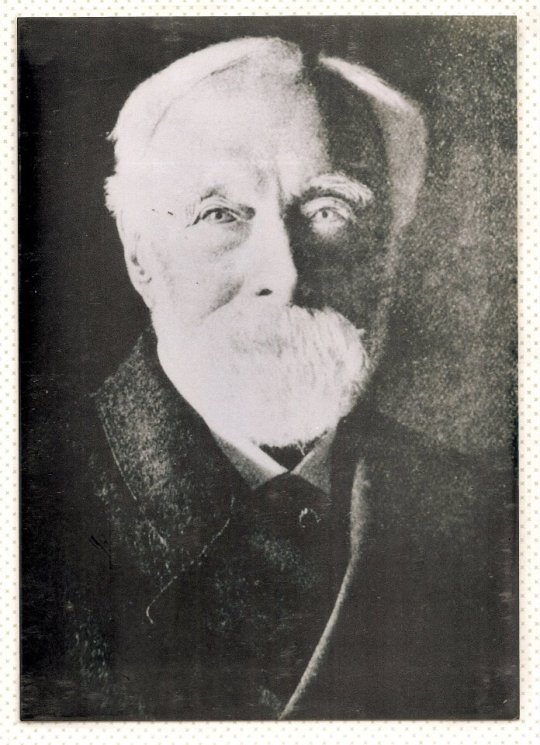
Edward Archibald Harbord Anson (1826-1925),son of Major-General Sir William Anson, 1st Baronet & Louisa Frances Mary Dickenson.He married 1stly,Elizabeth Mary Bourchier & 2ndly,Isabelle Jane Armistead.Served as Acting Lieutenant-Governor of Penang( 1867)/Lieutenant-Governor(8 June 1867-19th Feb.1871)/( 1873 - 1877)/( 1877)/( 1877- 1879)/( - 2nd Feb.1881)
His issue:-
i) Archibald John George Anson (1851–1929) married 1stly,Gwendoline Du Lane (Harford-Jones) & 2ndly,Isabel Denison.
ii) Elizabeth Mary Louisa Anson (1852–1934).
iii) John William Henry Anson (1856–1889) married Frances Anne Leigh (Hardings).
Please contact me at :- [email protected]
0 notes
Text
Contact us here if you wish to play one of them: https://thetudors.forumotion.com/t3169-england?fbclid=IwAR3xzSVOvdNGu7fobnSbm7yV0aXjrTm11nBlURG7WFggJGSFWmrvq6l3c2Q#50665

More Family:
Jhon More- son of Thomas More. Little is know about him, so his story is all yours to make.
Elizabeth More- Is daughter to Thomas More. Little is known about her, her story is all yours to make.
Margaret More- was an English writer and translator, probably the most learned woman of sixteenth century England. She was the daughter of Thomas More and Jane Colt, who probably died of childbirth. Margaret, "Meg" as her father used to call her, married William Roper. During More's imprisonment in the Tower of London, she was a frequent visitor to his cell.
William Roper- husband to Margaret More
Anne Cresacre-wife to Jhon More
Margaret Gigs- was one of the most learned women of the Tudor era and the foster daughter of Sir Thomas More.
John Clement- husband to Margaret Gigs
Gilcs Heron- husband to Cecily More
Parr Family:
Elizabeth Tyrwhitt- was a gentlewoman and courtier. she served in the households of Queen Jane Seymour and Queen Catherine Howard. She was a friend, lady-in-waiting and distant cousin, of Henry VIII's sixth wife, Catherine Parr, and served in her household.She served in the household of Katherine Parr and her fourth husband, Thomas Seymour, Baron Seymour of Sudeley. She gave evidence about a possibly inappropriate relationship between Seymour and his stepdaughter, the future Elizabeth I of England and about the death of Catherine Parr.
Grace Parr - daughter to Anne Bourchier and William Parr, niece to Anne and Katherine Parr. Fictional.
Darcy Family:
George Darcy, 1st Baron Darcy of Aston- son of Thomas Darcy, 1st Baron Darcy de Darcy
Sir Arthur Darcy- son of Thomas Darcy, 1st Baron Darcy de Darcy
Mabel Darcy - daughter of Thomas Darcy
Elizabeth Darcy- daughter of Thomas Darcy, 1st Baron Darcy de Darcy
0 notes
Text
A Bygone Era - Chapter 4
A fictionalised account of the life of Isabel Neville told through the eyes of those who knew her and herself.
Points of view written so far include Anne Beauchamp, Anne Neville, George Duke of Clarence and Isabel Neville herself
25th April 1469
High up and far-removed from the soothing slosh of a now fully thawed thames and the bustle of the city street’s mercers, sat the kingmaker’s women. The mahogany panels of the solar were warmed by ribbons of newborn saffron light. It now piercing through the stained glass windows threw a rainbow at the gold-adorned hems of the ladies’ gowns, setting them alight like embers. Queen Elizabeth sat above them all on a heavy dark chair propped upon the highest dias Isabel had ever seen. She was like a Heléne on her throne at Troy now gladly rinsed of her previous marriage to Sparta. The lovely curves of her rosy cheeks were raised in concentration as she led them all in the honourable practice of sewing shirts for the peasantry.
Isabel smirked at how much straighter her stitches were and how much nimbler her fingers worked through the countless linen shirts. Her mother from whom she had inherited her craft had, like her, finished ten, little Anne six and the Queen four. Perchance, it is true what they say about lineage and the gifts that come with it.
Besides her was sat the queen’s sister Anne, now Viscountess Bourchier, soon to be Countess of Essex, but never to truly be Isabel’s cousin-in-law. Not nearly as lovely as the Woodville Queen, but the way her long fingers would strum the strings of the psaltrey, was so light that the air seemed filled with each delicate twang.
The queen’s other lady, the flaxen-haired Elizabeth Tilney sat at the fringes of the queen’s entourage: far removed from Isabel’s mother, sister and the grandiose ‘proud Cis’. The room division’s resembled battle lines and that did not elude Isabel. She let out a dry cough, which she attempted to stifle behind her emerald sleeve in vain.
‘Milady Isabel’ started the queen causing her to arch an eyebrow at the masked daggers that lay beneath Elizabeth’s modulated voice. ‘You seem weary child, The way you danced at the St George’s day festivities! - oh - it is no surprise that your body may not have recovered’
Oh but how I danced. Isabel could remember that night still: the jolly minstrels, the helmeted cockentric clad in the blue and murrey livery of the house of York astride the pig and George’s invariably bright smile when portraying St George in the pageantries with a makeshift lead crown on his head.
Isabel felt a blush threaten to surface on her cheeks. Feeling the sudden wish to abscond to her chambers and immerse herself in her romances and think on George, graciously excused herself.
As she made for the end of the solar she caught sight of her mother’s drawn faded face. Rumours of her father’s clandestine affinity for Lancaster have seen a wane in his power at court. The future would scatter Isabel and Anne onto either side of this war depending on who they marry, but their mother’s rise and fall ran with her husband’s, for whom she now had only miscarriages to contribute. From the door Isabel once more dipped her head slightly as a special gesture meant only for her mother to which she responded with unmoving eyes.
Isabel’s moods now also greyed such that she forgot all about George and the pagentries and she felt the disquiet for her family’s fortunes grasp around her throat. Nevertheless, she counted herself fortunate to be free from the queen’s presence. That woman’s beguiling black eyes had done more damage to the House of Neville, then she could have ever herself known nor contemplated. That serpent. For all her foreigness to courtly power, it is for certes she who stands betwixt George and I.
Isabel took to hating her as organically as a fish to water. Little Anne however remained in awe of her loveliness and would often try to emulate her gestures and walk, probably believing that on account of similar colouring, someone would mistake her for the Queen. I was not as impressionable and naïve when I was her age, was I?
She made for the open hallway leading her to the wing where her provisional bedchamber was situated. The short trimmed grass enclosed within square shapes was a far cry from the phantasmagoria of the windswept scenes at Middleham or even Warwick castle. The Earl had always allowed the vines to grow onto the battlements and towers like in an Arthurian legend, their terre verte arms asserting their dominance over the grey stone like a snake would its prey.
‘Nostalgic, darling?’ Asked a young voice
Isabel spun around so quickly that the emerald of her skirts and the crimson of the long silk of her henin whirled around her thin frame as if in protection.
‘George! You half-frightened me!’ gasped Isabel
‘Are you indeed so surprised to find someone about court before vespers?’ he replied sardonically
‘No... no’ said Isabel regaining her composition ‘I was merely lost in thought’
‘On what may I ask?’
‘Thoughts too many to count on both hands’ she said feeling a sense of unwarranted nervousness creep into her voice, ‘mainly on when we are to marry. It has been many years past and I feel that if father cannot procure this, it only comes to show the King loves him no longer’
‘Oh how impatient you are!’ he chuckled
‘At ten and eight, how could I not be? Have you any notion of how it feels to know of all those since girlhood married and with children of their own?’ All those far plainer and less landed than I.
George gave her a look which no matter how endearing it may have appeared to him struck her as condescending.
‘Come here my haughty Isabel’ he said playfully gesturing to the stone bench behind them ‘Edward knows that I mean to have you and I will have it no other way. I have made my intentions clearer than a spring pond’
Though still appearing unappeased in the strain of her eyebrows, Isabel’s felt her body naturally turn towards his while she obeyed and sat. ‘It is that Rivers woman is it not? Casting her net over-‘
George placed his hand, on the small of her back bringing her closer, which they both knew was the most ardent gesture he could offer without making his cousinly preference for her visible. Little good it did them as the other half of the court that did not whisper of the Earl’s Lancastrian sympathies, rightly believed them secretly promised in a dangerous alliance. ‘Come now, as much as I am wrought to ever defend her or her kin, I must say that your father’s enmity over her has made you also overestimate her’
‘Do you truly believe my judgment to be wrong?’ demanded Isabel inquisitively ‘I have seen her over the past months. The Duchess of Bedford must have imparted to her all her craft’.
‘He has loathed her since that affair with Sir Hugh and how she spurned him thinking herself above in rank to his retainer. Who though a knight of Jerusalem, had not the courage to even ask for her hand himself. It was first father who had written to her and then yours.’
‘I thought it was because the Queen's father, then a mere knight, dared to summon father to Rochester believing him guilty of piracy and then having the nerve in refusing to relinquish his command of Calais, until the troops had been paid their - in arrears - dues.’
‘Oh but how much you do know!’
‘Father tells me all of this.’ smiled Isabel ‘I am his heiress after all.’ The future Countess of Warwick... like mother I shall be. How god wanted me to be powerful that he had me placed into a line where titles to pass to women like they do to men.
‘I see then. Would my lady care for a stroll around the herber garden?’ Asked George offering his hand, no doubt wanting to draw her somewhere more remote where he can freely confide.
Isabel knew she was expected to be in her room but begrudgingly accepted the offer nonetheless... She clung onto his peach satined arm as if he were leading her into a banquet. Feeling the slipperiness of the sumptuous material with each readjustment of her fingers. She started fearing that her nails would leave cuts into the material.
They dallied about the quadrangles pretending to be attentive to the spicy mix of violet hyssop and gentle-hued sage. Both their minds were elsewhere. They claimed their seats but this time on a bench so much smaller than the last, that George found himself blanketed by the thick skirts of Isabel’s Burgundian gown.
Isabel plucked a part of the Betony behind them. Its fuschia so bright it seemed to her that it did not belong in the same world as the fortress of Westminster with its sad colours and hoare-white walls whose winter spirit seemed to melt with each striking of the sun. ‘There George, I have just the plant for your humours’.
‘You believe me to have violent blood, you contemptuous girl?’ he said amicably responding to her coyness.
‘There never was a day I doubted it. Tempestuous, you were always’ she said softly with a twinge of longing for their schooldays
‘Then you ought to be my calming force. But now that I see how testy you be, I am beginning to question my belief!’ he teased holding a sage up to her eyes and finding it comparatively lacking in colour.
Isabel’s eyes peered at his back in amazement - at how they appeared to be constantly shifting in between honey and hazel. I may have the sea’s green in mine, but he has all its capriciousness. Oh how I mean to be married to him. Queen or mere Duchess, it matters not now. How noble he looks with his new black velvet cap - though a crown would suit better. She thought back to the tableaux of him as St George at the banquet. The delay in marriage had given her ample opportunity to grow accustomed to her role in George’s ambitions and for the past year she found she too yearned for their outcome. In being schooled in Latin and matters constitutional and equitable, she found a welcome addition to her otherwise stale instruction in religion and manors.
‘Now sweetling, tell me of your father’s plans. What was that business with Wenlock in Calais?’ prodded George
‘That I was not privy to’ answered Isabel quietly ‘But perhaps it is time you told me of what you and father mean to do with that Robin fellow. His name was circulating around Middleham before we left a fortnight ago.’
‘A mere decoy, my love. It is John Conyers, a kinsman of yours by marriage’ replied George ‘Would you keep a secret?’
It just now dawned on her how easily George is like to surrender information just to prove himself the more informed. Isabel nodded quickly, ‘Oh yes! Jesus wept, I thought I would go mad trying to wade through your and father’s spider mesh ‘till I could decipher your strategy!’
‘Well, We have borrowed some money from the city to raise men and we will march north to Edgecote’ whispered George jubilantly ‘with troops raining down on him from Yorkshire and us from the south. Edward will be entrapped like a lamb in its pen. With that simpleton Robin of Holderness dealt with, Edward would immediately assume that our Robin of Redesdale be of Lancaster as well’ George’s already large eyes clearly brightened at the prospect of schooling the kingmaker’s daughter in strategy. With a voice that bordered on too loud he continued, ‘-and deal with him himself thinking Captain Margaret begins this plot. Did you know he always secretly feared her’
Isabel nodded slowly in comprehension. ‘If you have taken to drawing arms against your brother, then pray tell: how may we secure permission to wed?’
‘Why we need only god for that, do we not? And that we have for the dispensation has been given by his Holiness’ announced George smuggly to a hushing Isabel who was now nervously peering around for any sign of life that would betray this conversation to her newfound enemies. Reassurance and bliss showed on her face when he added, ‘and we shall finally be married, in a couple months time but in Calais. And no one, not even Edward can move against it’
New dissensions brewed and strangely in a room which populated with the tight-lipped smiles of the barons’ wives, and the handsomest King and Queen that England had ever seen, seemed dyspathetic to such.
After being privy to what she believed to be the full extent of her formidable father and George’s plan, she felt an unfathomable anxiousness follow her with every step she took at court. She may have felt so uneasy, that even her raven hair felt heavy and tangling under the protection of the confining heart-shaped henin, but she was resolved to prove herself a true lady of good virtue.
I am kingmaker’s daughter and need to also mask my knowledge of treason, in every empty smile and curtesy, however dishonest that act may be, she thought to herself, while approaching the dias. The naïve Felice was now once more at war with the heiress of four great houses.
In the same azure gown she wore before vespers, Elizabeth the Queen minced onto the dias in a manner whose imperiousity, Isabel conceded, was greatly aggravated by her own dislike. Therefore, she was half-surprised to see it was indeed the king, who with a booming proclamation declared court reopened.
‘Ah- if only it had been you there beside the king. A more apt mediator to soothe our differences could never have existed’ cautiously joked her father, one step behind her. You mean to say I would have better filled the throne that you built.
‘Oh but father, surely you could not fault me for that, I was not yet ten and still with the nurses, when you - he was crowned’ said Isabel
‘The fault would be of none but mine. It did not occur to me until the last of your dear mother’s miscarriages that I would have no son. Had I realised how god feared the coming into this world of a son born of people as we are, insatiable and limitless, who would soon make half of our native land but the manor of one man, I would have made certain that if the blood of our lines must pass into new houses, it would have been that of royal. Nine years past he would have denied me nothing.’
The Earl’s tone was tender, causing a smile that revealed some of the lines and folds of one on the brink of advanced age. The way the rich red folds of his overgrown fell, however, revealed the body of a younger man still lean and strong. He amiably caressed the arm of his favourite daughter, the warmth of his hand cooled by the pale jewels resting on each finger. To all around them it would appear as if a plot were being hatched between the Neville clan, such smiles were commonplace for Isabel and foreign to all else. It was particularly that which made Isabel reciprocate.
‘But father, what of George?’ She queried with amusement still in her voice ‘I could not be more pleased with such an arrangement, not even if it were with the King himself’.
She spared him a glance. He who towered above all men unrepentant, shared the same kingly beauty as George: a small rosebud mouth, retrousse nose and high forehead. However, where George’s hair hung in châtain curls streaked with gold and some copper, Edward’s hair was straight, dark and fashioned under a velvet cap like she so often saw sported by his emulative brother of Gloucester. Where George’s eyes were large, round and revealed much, his were were her father’s Neville brown cunning eyes, sharp, alert and intelligent.
Edward of York’s large frame, voice and person did nothing to diminish the impossible elegance of his every movement and friendly countenance. In spite of Isabel’s penchant for prettiness in men that naturally exalted George in her eyes, she could see that Edward was rightfully considered the handsomest and born to be king, and begrudgingly Isabel accepted that, on looks alone, Elizabeth seemed to as well.
‘Yes, Clarence has all the superficial signifiers of his house: gallantry, bravery and chilvalry. I believe him to be a protector of the old ways and what is true and good. I also think him more inclined to listen to counsel than his brothers. But, dear daughter, you mistake me for your uncle of Montagu. It is he who is a soldier and I, a diplomat, have little interest in bloodshed and moreseo where it concerns one who I once thought of as a brother’ her father added sadly ‘Alas, you, Clarence and I are Nevilles and we do not shirk from our obligations to England’
‘I mean to say, I do not dutifully come to the Clarence as a wife’, she plead redressing her indescrete use of his Christian name. A habit that she should resign in the annals of her childhood, when becoming Queen ‘It is no resignation for me. Truly father if you’d know how lonely I felt after sister Margaret left to marry that knight, with naught but mother and books to keep me company... But whenever at court, Clarence provides me with a companionship I am so joyous and gracious of, that I feel loved by him as I merit. He is comely, charming, witty and oh so very learned’. To her chagrin Isabel noticed herself nervously fiddling with the rings upon her pale dainty fingers. When shall the day come where I no longer have to switch in between fingers George’s emerald ring? I so yearn to proudly present it to all.
‘A curse on that learning I say’ muttered the Earl ‘his love for poesies has yielded upon us a man full of scruples, fears and doubts. I daresay the only flaws he shares with his brother of Gloucester. But where Gloucester with the cold craft strange for one so young harnesses them into a shield, Clarence lets himself be swepped up in the chaos of his own wary premonitions and acts rashly.’ The Earl’s ominous speech was interrupted by the slight chuckle he had to himself, bringing his fingers up to his temple as if in a headache, he continued in a light incredulous tone that confused even Isabel in its interspersion of fatherly affection and judgment, ‘My, had you been there to witness how he demanded for your hand in marriage - he strode into the privy council and made his request in a manner so defiant, it was as if the king had already refused him before!’
Read the rest of the chapter and all those before it here: https://archiveofourown.org/works/22268239/chapters/55672000
#isabel neville#anne neville#wars of the roses#historical fiction#the white queen#george duke of clarence#richard neville earl of warwick#anne beauchamp#house of york#a bygone era#please r and r#warwick the kingmaker#fanfiction
0 notes